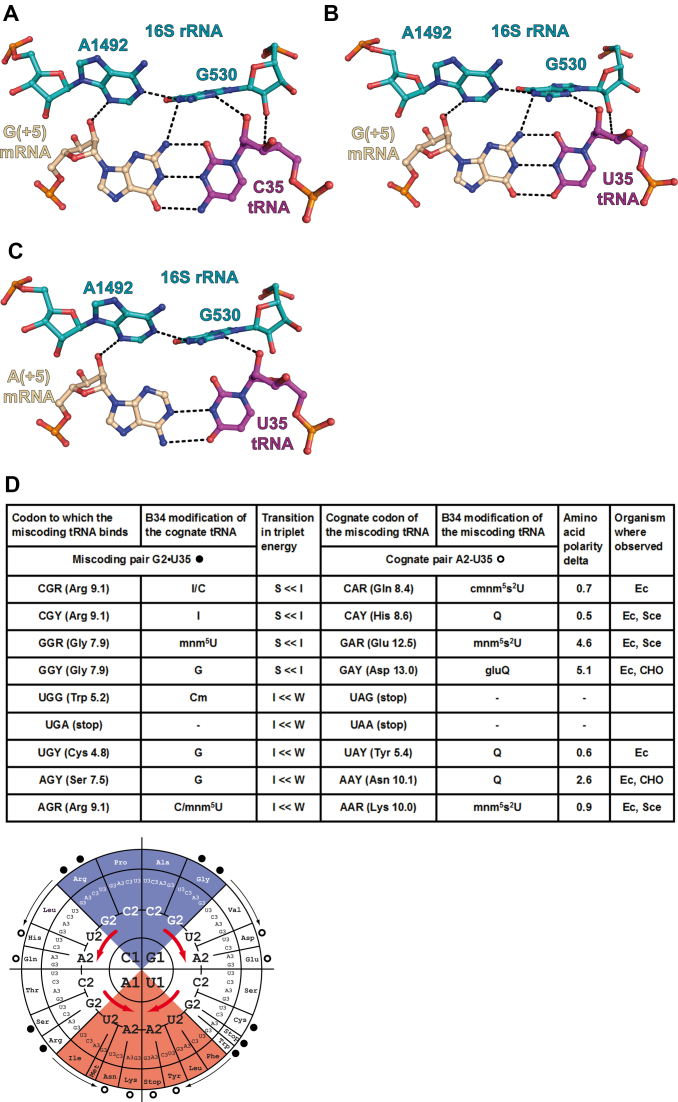Figure 4.
Substitution of a G2 = C35 pair or a A2-U35 pair by a G2•U35 base pair in the second position of the codon–anticodon duplex. (A) Cognate G2 = C35 pair from the complex of 70S ribosome with mRNA and tRNAArg (this study, PDB ID: 6gsl); (B) near-cognate G2•U35 pair from the complex of 70S ribosome with mRNA and tRNATyr (PDB ID: 4v8e); (C) A2-U35 pair from the complex of 70S ribosome with mRNA and tRNALys (PDB ID: 5e7k). The nucleotides of the 16S rRNA are depicted in teal, tRNA in magenta and mRNA in wheat. The dashed lines indicate the putative hydrogen bonds (interatomic distance ≤3.3Å). (D, top) Summary table of all amino acid substitutions resulting from the incorporation of the mismatched pair with comparisons of amino acid polarity, transition in triplet energy between the two cognate tRNAs (S = Strong, I = Intermediate, W = Weak), the experimentally observed G•U pairing miscoding available in the literature (Escherichia coli (EC), Saccharomyces cerevisiae (Sce) and CHO cells). The in vivo data for E. coli and S. cerevisiae are from (6,7) and (28); those for the CHO cells are from (27). The transition in triplet energy between cognate tRNAs and the base modification at nucleotide 37 in the respective cognate tRNAs (for E. coli) are both indicated to point to the competition between the tRNAs for the A site. The cognate codon of the miscoding tRNA is at the right and at the left the miscoding pair formed by the miscoding tRNA. (D, bottom) The corresponding tRNA modifications and relative positions of cognate and near-cognate codons on the energy wheel. The miscoding pairs (dark circles) are indicated with the thin arrows pointing to the miscoding tRNA (open circles) (e.g. a tRNAHis miscodes an Arg codon or a tRNAAsp miscodes a Gly codon). The thick red arrows indicate the energetic transitions between Strong (blue) and Intermediate (white) codon–anticodon triplets as well as between Intermediate and Weak (red) ones. Because the substitutions are at the second position, the transitions occur within each of the four quadrants. The miscoding tRNAs are highly modified and replace stronger, but less modified, tRNA binders. Many instances have been reported in the literature.

